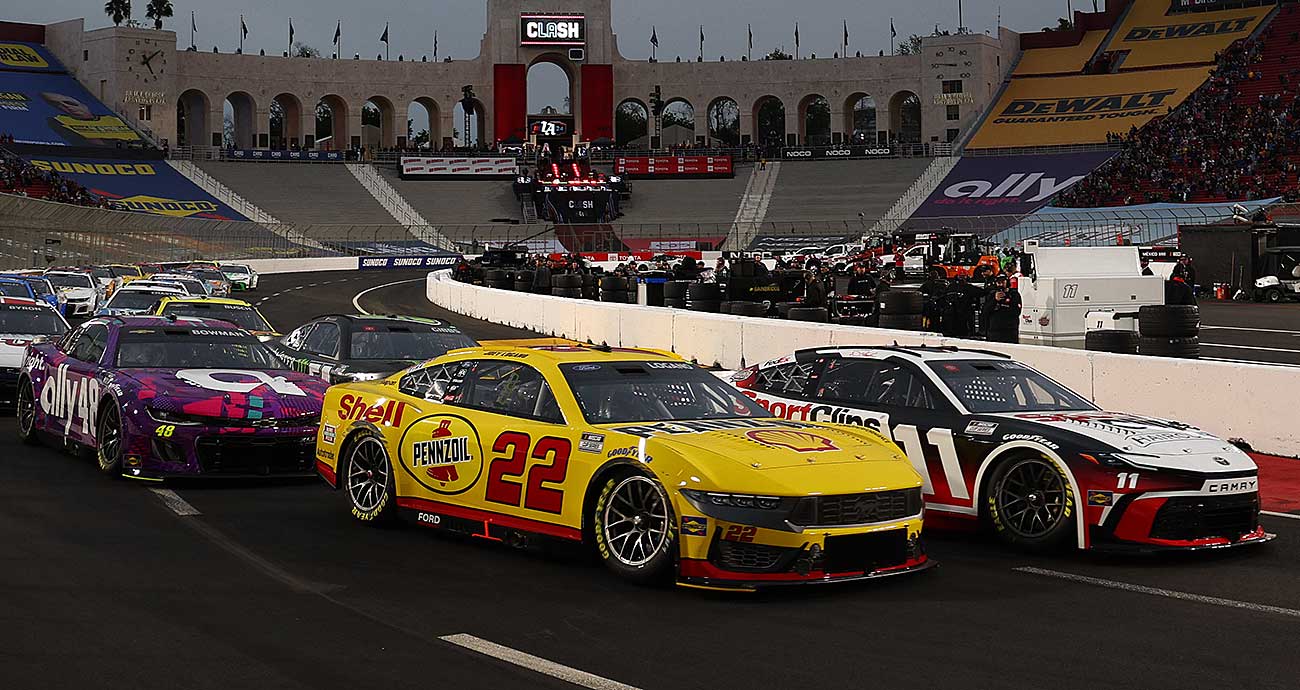It sounds like new engine regulations could debut for the NASCAR Cup Series come 2026 or 2027 that could allow for a new manufacturer to join Chevrolet, Ford and Toyota.
Honda has been at the center of garage rumors as the most likely OEM to enter the highest levels of Stock Car competition. And while NASCAR nor Honda has confirmed those rumors, NASCAR chief racing development officer John Probst made an appearance on SiriusXM NASCAR Radio on Thursday to detail all the reasons a new manufacturer will soon have a logical runway.
“A timeline for a new OEM coming into our sport is somewhere in the 18- to 24-month period,” said Probst on the licensed NASCAR channel. “When we work with our existing partners, obviously it’s important for us to make sure that any new partner coming in would be a complement to what we have here today.
“So, there would be an outside chance we could do it quicker. And certainly, when all of our existing OEM partners are on board, which they are, you know the opportunity would exist, we may be able to expedite that, but under normal circumstances, 18 to 24 months.”
Probst said a new manufacturer would likely have to begin the engine and body submission process over the summer months.
“If a new OEM did want to come in 2026, we are within a few months of us getting to the point where you almost start running out of time to go through all the steps that we have today,” Probst said. “If all the stars align, it is possible you could do it quicker than 18 months.
Related: NASCAR predicitons, Shriners Children’s 500 odds and preview
“It would take a lot of effort and frankly a little bit of luck to get everything to line up perfectly to do that… Certainly, 2026-2027 would be pretty ideal years for an OEM that would be looking to come to our sport right now to make a launch.”
Toyota was the last manufacturer to enter NASCAR, arriving to the Cup Series in 2007 following a three-year stint in the Craftsman Truck Series, and a challenge for that manufacturer was working towards a chassis and body combination that was both competitive and aesthetically pleasing.
Now, the current generation car is effectively a spec platform with only the body and engine fundamentally different between the manufacturers.
Read Also: NASCAR might have found a new stadium race in SoCal
“The timing has probably never been better for an OEM to consider coming into our sport,” Probst said. “In years past, you were effectively trying to build the car from the ground up before you would come into our sport. With the Next Gen car, the way it is today, we preserved the DNA of the OEM’s in the body work and in the engines that go in the car.
“So as a new OEM looking to come into NASCAR, you’d be looking at developing a body and then also getting an engine approved for use in our sport.”
NASCAR appears to be inching closer towards a hybrid component to its longstanding pushrod V8 power plant too.
Since 2012, McLaren has provided the ECUs, digital dashes and numerous electronic components that power cars at the highest level. McLaren has since extended with NASCAR and Probst indicated even more electric technology is on the way that would be appealing for manufacturers in their pursuit of futuristic power plants.
“We’ve already awarded that contract to McLaren, who is the existing electronic supplier in the Cup Series,” Probst said. “The feedback from our team partners and the OEMs as to which direction we want to go in this case with the ECU and the electronics around the Cup cars, that was McLaren and that will launch in 2025.”
Does this mean the V8 pushrods will soon go the way of carburetors from over a decade ago?
“Yeah, certainly,” Probst said. “One thing that is common in our approach to just about everything now on the technical and the competition side is we leave all our options open and we try not to close any doors. That’s certainly true of the electronics. They are more capable than the electronics that we have on the car today.
“They will open up doors to allow us to explore what may potentially lie ahead with respect to power trains in the Cup Series. In general, it’s just meant to keep our cars current to the relevant technology that exists today and to keep our options as wide open as they can be into the future.”
Long term, NASCAR is still pursuing alternative fuel sources for its future, like hydrogen combustion but the NextGen was always intended to feature a form of EVO on the current generation engine platform and it seems that could come as early as 2026 or 2027.
h/t: Catchfence for the transcription
Matt Weaver is a Motorsports Insider for Sportsnaut. Follow him on Twitter.

